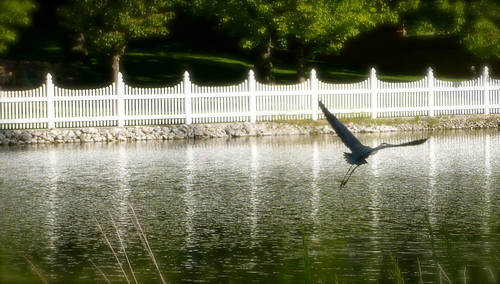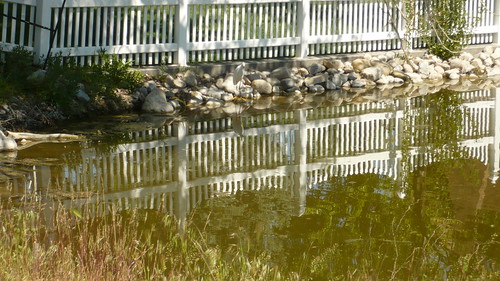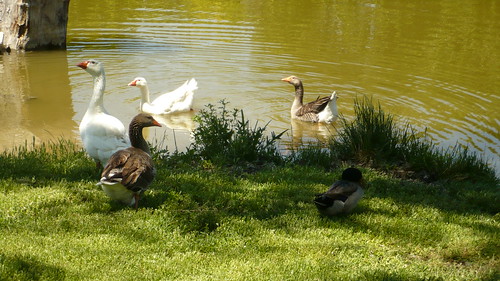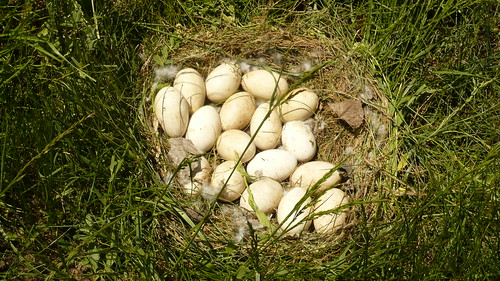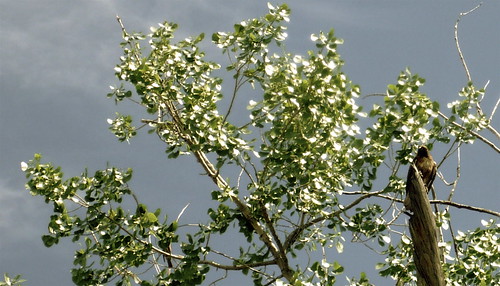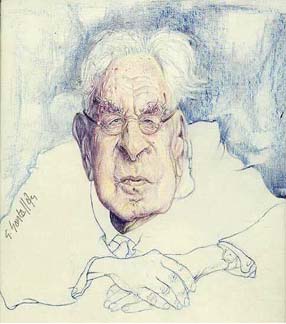 F
Few modern historians enjoy similar levels of praise and scrutiny toward their work as the late Arnold Toynbee (1888-1975). Born in London to an affluent, well-educated family, Toynbee took at a young age to the study of classical culture and history. He was smart, diligent and above all embodied that function of all great thinkers which allows them to see a bit deeper and further than most. Toynbee’s main contribution to historiography is his
magnum opus, a three-and-a-half-million-word
A Study of History (1934-1961) wherein he lays out a philosophical justification and almost parochial reasoning for the rise and fall of civilizations. Agree with Toynbee or not, his
History was perhaps the single most important piece of historical narrative to come out of the twentieth century.
Toynbee attended Balliol College, Oxford, “where he pursued ‘an old-fashioned education in Greek and Latin classics.’”(1) Shortly after graduating (1911), Toynbee took employment with the British Archaeological School in Athens. For the next 13 years Toynbee’s successes landed him numerous chairs and appointments, even attending a British delegation to the Paris Peace conference following WWI. His accomplishments led to connections, and in 1924 Toynbee “began 33 years as Director of Studies at Chatham House and produced the voluminous
Survey of International Affairs…”(2) The position was well suited to Toynbee’s style and current interests, allowing him to research a wide variety of political and cultural trends, which he no doubt applied toward his
History. His annual reports were in themselves extraordinary feats of erudition.
As a historian, Toynbee’s ideas grew naturally out the earlier work of Oswald Spengler’s
The Decline of the West. However, unlike Spengler, Toynbee “did not regard the death of civilization as inevitable…[and] unlike Marx, he saw history as shaped by spiritual, not economic forces”(3) Toynbee rejected the idea that history is simply one damn thing after another, and in his
History set out to prove a Universal thesis of parallel progress across “twenty-one distinct civilizations…genesis, growth, breakdown, disintegration, [and] reconstruction in [a] new synthesis...”(4) In a profession of pragmatists, he had faith - in a world of increasing secularism, he saw deeper religious themes and overarching narratives. His History is both praised and challenged precisely because that, again, almost parochial feel. Indeed, Toynbee has been characterized as the “most attacked historian in history.”(5)
Toynbee diverged from the growing academic consensus toward the secularization of history. His
History is the antithesis to Marx’s thesis,
Capital; God, not labor markets and economics, directed human affairs. But his ideas of God were neither theologically nor ideologically entrenched; his concept of God would be more like that of Spinoza’s (pantheist), as opposed to Augustine’s (personal and revelatory). Still, his approach was parochial, eclectic, and unusual in the current climate of historiography, and indeed would be wielded as the singular weapon by many his detractors.
Marguerite Howe’s article in
The Nation (Oct. 1973) challenges Toynbee’s overarching theme of memesis/nemesis; “the choice of words betrays the Christian and classical biases that deal a
coup de grace to Toynbee’s already overtaxed empiricism, indeed, to his very reasoning powers. Cause and effect begin to look suspiciously like sin and retribution…most readers will have parted company with Toynbee long before he concludes that some miraculous spiritual improvement will yet ‘reprieve’ our failing Western civilization.”(6)
Although his detractors were numerous, they by and large “agreed on the sweep of his vision and the earnestness of his convictions.”(7) He wanted to find meaning and purpose to this long parade of events called human history, and he succeeded in that. “In a curious way Toynbee seemed to recapitulate almost all the phases of Western historiography. He was a positivist seeking scientific laws; he was a historicist finding a plan and pattern in the past…[and] he was also an exemplarist finding in history lessons that might be applied” to the present. But, as Conkin points out, his masterpiece was “as much a dead end as
Finnegans Wake.”(8) There was nowhere to go from the house Toynbee had built; it was a stranded island of faith in a sea of skeptics.
Toynbee was forced to edit his
opus later in life, and published a shortened version for the casual reader. Though particulars of the work changed, and the edges softened a bit, it remained very much the same in its fundamental conclusions. He believed, and believed strongly that “we are now moving into a chapter in human history in which our choice is going to be, not between a whole world and a shredded-up world, but between one world and no world. I believe that the human race is going to choose life and good, not death and evil.”(9) Bold conclusions for a modern historian - a profession that treats belief in God more like fable than scripture. Toynbee will continue to stir controversy, as his life and work are very much a manifestation of that long tradition which aims to make sense of history, as opposed to just recording it.
Footnotes
(1) Contemporary Authors, New Revision Series, vo. 36, s.v. Toynbee, Arnold, 430.
(2) Kenneth Winetrout, Arnold Toynbee: The Ecumenical Vision (Boston: Twayne Publishers, 1975), 14.
(3) The New Encyclopedia Britannica, 15th ed., s.v. “Toynbee, Arnold.”
(4) Contemporary Authors, Arnold Toynbee, 430.
(5) Paul K. Conkin and Roland N. Stromberg, The History and Theory of History (Wheeling: Forum Press, 1989), 101.
(6) Marguerite Howe, “Two Prophets of the Absent God,” The Nation, 315.
(7) Alden Whitman, “Arnold Toynbee, Who Charted Civilizations’ Rise and Fall, Dies,” New York Times, 23 October 1975, p. 1.
(8) Conkin, Heritage and Challenge, 102.
(9) Whitman, “Arnold Toynbee,” New York Times.
© 2009 D. Reese Zollinger
The idea behind this essay was to write a bio in three pages double spaced. Brevity is a bitch, I must admit. How does one sum up the life of anyone in three pages? The point being that encyclopedia articles do it all the time, so that is part of the lesson. Toynbee is an interesting case study in modern historians enamored with the impact of "God" on human affairs - and his Study is brilliant albeit long-winded attempt to prove that phenomenon.
I don't necessarily agree with his conclusions, but you have to respect the brilliance.




